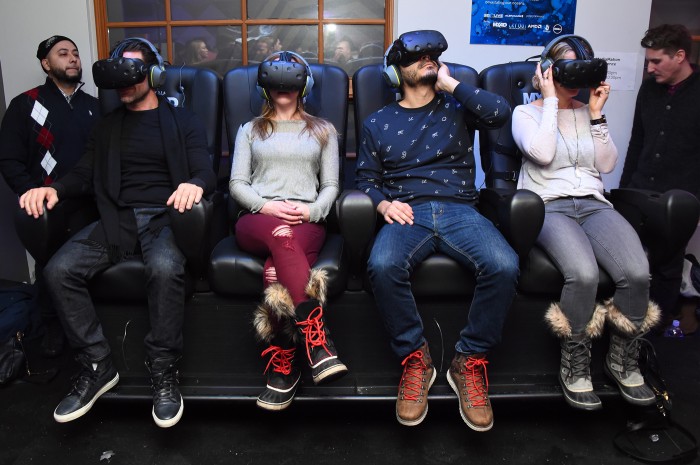To Save the Planet, First Put On a VR Headset
Do you know what it feels like to be a cow on its way to slaughter? Probably not—but if you put on a virtual-reality headset, you might become a little more sympathetic to the bovine cause.
That’s according to research carried out by a team from the University of Georgia, Stanford, and the University of Connecticut, which shows how VR experiences can give people a more empathetic view of the natural world. In a series of experiments, the team had participants assuming the role of a cow being herded into a truck, virtual cattle prod and all, or a piece of coral suffering the effects of an acidifying ocean, causing (virtual) limbs to break away.
The results, published in the Journal of Computer-Mediated Communication, found that the experience provided participants with a “greater perceptions of imminence of the environmental risk and involvement with nature” than people who were simply shown video depicting the same situations. The effect was shown to last for at least one week.

It’s a worthwhile goal to be chasing. One of the major problems in getting people to take on environmental issues is the lack of clear causal links between one’s actions and their impact on the natural world—because the impact is usually felt somewhere else or much later in time. By placing people in the thick of the action using VR, it may be possible to change their perception of how their actions affect the wider world.
It’s not the first time virtual reality has been used to try to elicit empathy. A study by researchers from Stanford’s Virtual Human Interaction Lab has shown that people who played the part of a lumberjack tasked with cutting down redwood trees in a virtual world used fewer paper napkins than those who simply thought about the act of chopping down trees.
Another, more recent study has created VR experiences to show people what it’s like to come face to face with a white rhinoceros. The hope is that it could increase a user’s empathy for the creatures and encourage support for conservation efforts.
Clearly, a quick experience with any of these setups is unlikely to turn anyone into David Attenborough overnight. But speaking to the Guardian, the researchers behind the cow and coral tests reckon that such approaches could be used in educational settings to demonstrate humanity’s impact on the natural world. It’s hard to have any beef with that.
(Read more: Journal of Computer-Mediated Communication, The Guardian, “Using Virtual Reality to Save the White Rhino,” “Disability-Simulating VR Promotes Empathy”)
Keep Reading
Most Popular
Large language models can do jaw-dropping things. But nobody knows exactly why.
And that's a problem. Figuring it out is one of the biggest scientific puzzles of our time and a crucial step towards controlling more powerful future models.
The problem with plug-in hybrids? Their drivers.
Plug-in hybrids are often sold as a transition to EVs, but new data from Europe shows we’re still underestimating the emissions they produce.
Google DeepMind’s new generative model makes Super Mario–like games from scratch
Genie learns how to control games by watching hours and hours of video. It could help train next-gen robots too.
How scientists traced a mysterious covid case back to six toilets
When wastewater surveillance turns into a hunt for a single infected individual, the ethics get tricky.
Stay connected
Get the latest updates from
MIT Technology Review
Discover special offers, top stories, upcoming events, and more.